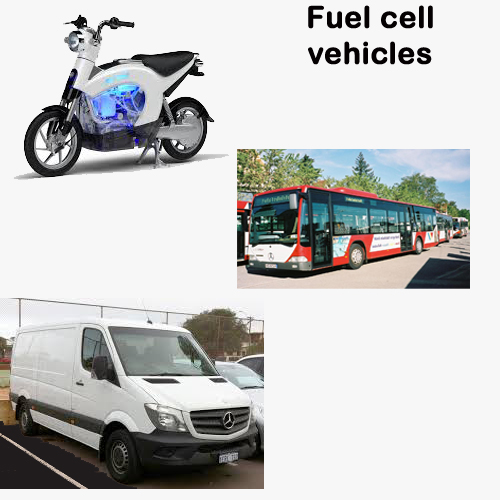Fuel Cell electrical vehicle
A fuel cell electric vehicle (FCEV) is a type of electric vehicle which uses a fuel cell, instead of a supercapacitor, or a battery or in combination with a battery, to power itselectric motor.
Fuel cells in vehicles generate electricity to power the motor, using oxygen from the air and compressed hydrogen.
Fuel cells have been used in various kinds of vehicles, especially in space applications.
The Toyota Mirai was the first commercially produced hydrogen fuel cell automobile,introduced in 2015
As of 2017, there was limited hydrogen infrastructure, with 36 hydrogen fueling stations for automobiles publicly available in the U.S., but more hydrogen stations are planned, particularly in California. Some public hydrogen fueling stations exist, and new stations are being planned, in Japan, Europe and elsewhere.
Description of fuel cells in vehicles:
Fuel cells are made up of three parts an electrolyte, an anode and a cathode.Fuel cells are made up of three parts an electrolyte, an anode and a cathode. A hydrogen fuel cell functions like a battery, producing electricity, which can run an electric motor. Different types of fuel cells include polymer electrolyte membrane (PEM) Fuel Cells, direct methanol fuel cells, phosphoric acid fuel cells, molten carbonate fuel cells, solid oxide fuel cells, reformed methanol fuel cell and Regenerative Fuel Cells.
Applications:
The most prevalent fuel cell vehicles are
1.Buses
2.cars
3.forklifts and material handling vehicles.








